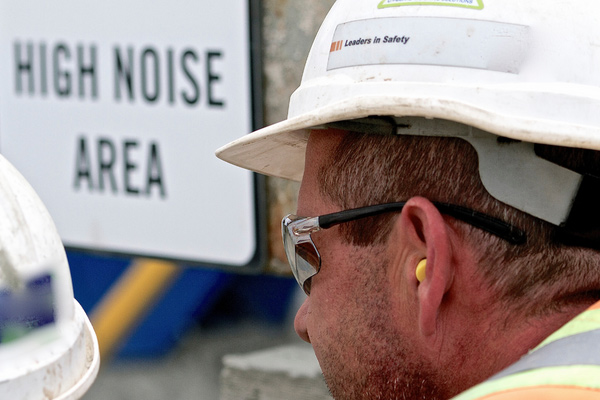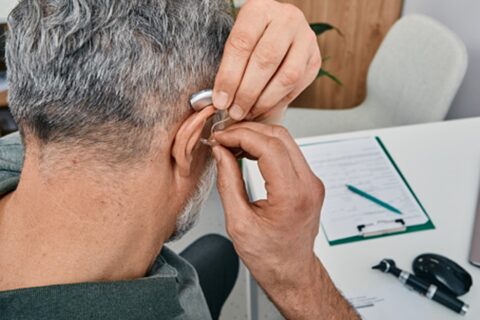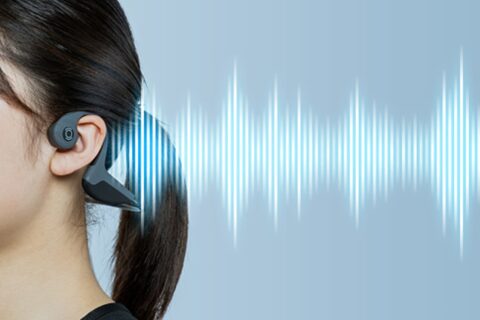Hearing Evaluation
 During a hearing exam, your audiologist will measure and record various aspects of your ability to hear.
During a hearing exam, your audiologist will measure and record various aspects of your ability to hear.
What Happens During a Hearing Evaluation
When you visit the Florida Gulf Coast Hearing Center, your audiologist will perform a thorough ear examination of the entire ear, including the outer ear, ear canal, eardrum, and middle ear to ensure there’s no underlying cause of your hearing loss that might require medical attention. Then you’ll undergo a rigorous diagnostic hearing evaluation to assess:
- Whether you have hearing loss
- The sensitivity of your hearing at different frequencies
- The type of hearing (neural, sensorineural, conductive, or mixed)
- The degree and configuration (one or both ears) of hearing loss
A comprehensive hearing evaluation at Florida Gulf Coast Hearing Center typically includes:
Otoscopy
During an otoscopic exam, your audiologist will use a specialized tool called an otoscope to exam your ear canal and ear drum. This visual exam will reveal abnormal color, shape, or position of the various parts of the ear. Air may be blown into your ear to evaluate how the ear drum reacts to the air pressure.
Air and Bone Conduction Testing
Air conduction testing, also known as pure-tone testing, helps an audiologist determine the quietest sound you can hear at different pitches or frequencies. You will wear earphones and the audiologist will send a sound signal through the earphone into the outer ear to the middle ear and then to the cochlea in the inner ear. You will indicate that you heard the sound.
Bone conduction testing is similar to air conduction testing, except an electromechanical earphone is placed on the skull. When the noise signal is sent, rather than traveling through the air of the outer and middle ear, the sound vibrations will stimulate the cochlea, allowing you to hear the sound. Like air conduction testing, you’ll indicate to the audiologist that you’ve heard the sounds.
When these tests are conducted together, your audiologist can compare the results of each test to help determine if your hearing loss is conductive or sensorineural hearing loss.
Tests of the Middle Ear
There are several tests to determine how your middle ear is functioning. These tests include:
- Tympanometry
A tympanometry measures the condition and movement of the tympanic membrane (eardrum) as it responds to changes in pressure. A tool called a tympanometer probe is inserted in the ear canal and it measures how the eardrum responds to the sound at different pressures. - Acoustic Reflex Measure
This test measures your acoustic reflex, which is an involuntary reaction of a small muscle in your middle ear to loud sounds. In this test, sound is delivered through a probe in the ear canal, and a device measures how loud the sound has to be in order for the muscle to reflex. - Static Acoustic Impedance
This test measures how much air is in the ear canal and can determine if there is a hole in the eardrum or if you have fluid behind your eardrum.
Otoacoustic Emissions (OAE)
The OAE test determines how well your inner ear, or cochlea, works. It measures otoacoustic emissions, or OAEs. Hair cells in the inner ear respond to sound by vibrating, producing a quiet sound that echoes back into the middle ear. This sound is called otoacoustic emissions, or OAEs. The OAE test measures these sounds to help the audiologist understand if your inner ear is working properly. During this test, A small earphone is placed in your ear and send a sound, while measuring the sound that comes back.
Auditory Brainstem Response (ABR)
The ABR test is used to determine if your hearing loss is due to a problem in the brain or in a brain pathway. Electrodes are placed on your head and connected to a computer to record brain wave activity in response to sounds you hear through earphones.
Speech Assessment
Speech testing measures the quietest speech an individual can hear. The audiologist will say a word and ask you to repeat it. Speech testing can be performed in a quiet or a noisy environment; a noisy environment can be especially beneficial as many people complain they have trouble hearing or clearly distinguish words in a noisy environment.
After the Exam
A comprehensive hearing evaluation at Florida Gulf Coast Hearing Center will typically last 1-2 hours. Following the testing, your audiologist will explain the results and recommend a treatment plan. Depending on the cause and severity of hearing loss, treatments can include removal of ear wax or foreign objects, treating an infection with antibiotics, surgery, hearing aids, cochlear implants and a combination of speech therapy or assistive listening devices .If the cause of a patient’s hearing loss or balance disorder requires advanced medical or surgical treatment, an audiologist may coordinate care with an otolaryngologist, or ear, nose, and throat physicians, such as our partners at Florida Gulf Coast ENT. Our unique combination of ear, nose, and throat physicians and highly trained hearing specialists make our practice the optimal care provider for your hearing health.


